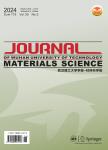Calibration of Binding Energy Positions with C1s for XPS Results
Calibration of Binding Energy Positions with C1s for XPS Results作者机构:State Key Laboratory of Silicate Materials for ArchitecturesWuhan University of TechnologyWuhan 430070China Center for Materials Research and AnalysisWuhan University of TechnologyWuhan 430070China School of Materials Science and EngineeringWuhan University of TechnologyWuhan 430070China
出 版 物:《Journal of Wuhan University of Technology(Materials Science)》 (武汉理工大学学报(材料科学英文版))
年 卷 期:2020年第35卷第4期
页 面:711-718页
核心收录:
学科分类:081704[工学-应用化学] 07[理学] 08[工学] 0817[工学-化学工程与技术] 070302[理学-分析化学] 0703[理学-化学]
基 金:Funded by the National Key R&D Program of China(2017YFC0210802) the Fundamental Research Funds for the Central Universities(WUT 2019III015GX)
主 题:XPS calibration charging effect binding energy C1s
摘 要:The adventitious carbon located at 284.8 eV was used to calibrate samples without the carbon *** the carbon is as a major part of the inorganic material,the adventitious carbon should be identified and used as the *** is no adventitious carbon on the surfaces of the polymer materials,so using C1s of the carbon in the polymer itself to calibrate the charging effect is ***,compared with gold and argon,a more practical and convenient method based on C1s is proposed to get the right positions for binding energy peaks.



